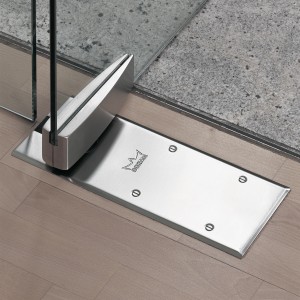 Floor closers are the lesser known little brother of the door closer, but if we’re being honest (and aren’t we always?), I’m actually partial to them.
Floor closers are the lesser known little brother of the door closer, but if we’re being honest (and aren’t we always?), I’m actually partial to them.
They’re sleeker.
They’re less noticeable.
They do their job without making a big fuss about doing their job.
That’s my kind of hardware.
If you aren’t familiar with the floor closer, today’s your lucky day because we’re going to talk about where they work best and why.
Floor Closers and Their Basic Applications
Floor closers are very common, especially in the world of banking. In most banks, the overall aesthetic they go for is sophisticated without being flashy. They want as many minimal distractions as possible and security is their number one priority.
This is where the floor closer comes in.
The mechanical part of any floor closer is never visible to patrons. To an untrained eye, a floor closer looks like a rectangular piece of metal on the ground, but the truth is, floor closers are concealed beneath the floor.
Floor Closers vs. Door Closers
Door closers have a tendency to be bulky and aren’t suited for all doors.
Most banks tend to use large glass doors and/or oversized doors throughout their buildings. This makes them perfect candidates for floor closers. A regular door closer wouldn’t be able to withstand the weight of an oversized door and, before long, the arm would break under the pressure and the closer would fail.
Because a floor closer is underneath the door, it can hold much more weight.
Floor Closer Installation
Floor closers should be installed during new construction, which might be disappointing if you were thinking about switching to one. The concrete around the door needs to be cut out during construction and a place needs to be created to house the closer within the concrete. The closer then needs to be installed where the door pivots, allowing it to carry the weight of the door.
If you were super determined to get a floor closer, you would need to remove the entire door and cut out an area of concrete where the floor closer would go and then install the door on top of the closer. The dollars begin to add up quickly, so while it can be done, it’s typically not recommended.
Are you considering using floor closers in your new building? If so, we’d love to help out and answer any questions you might have. Give us a call today!
